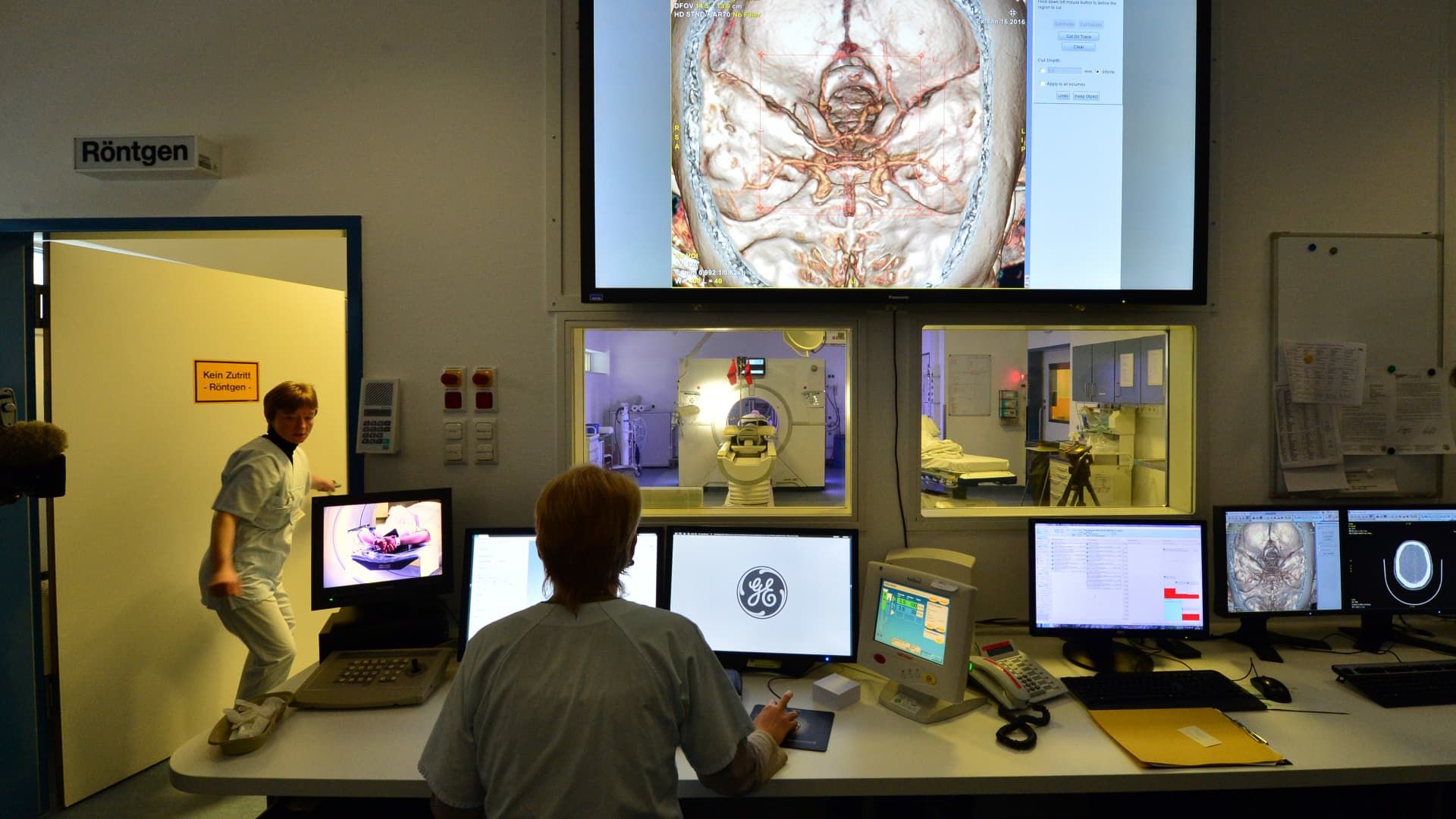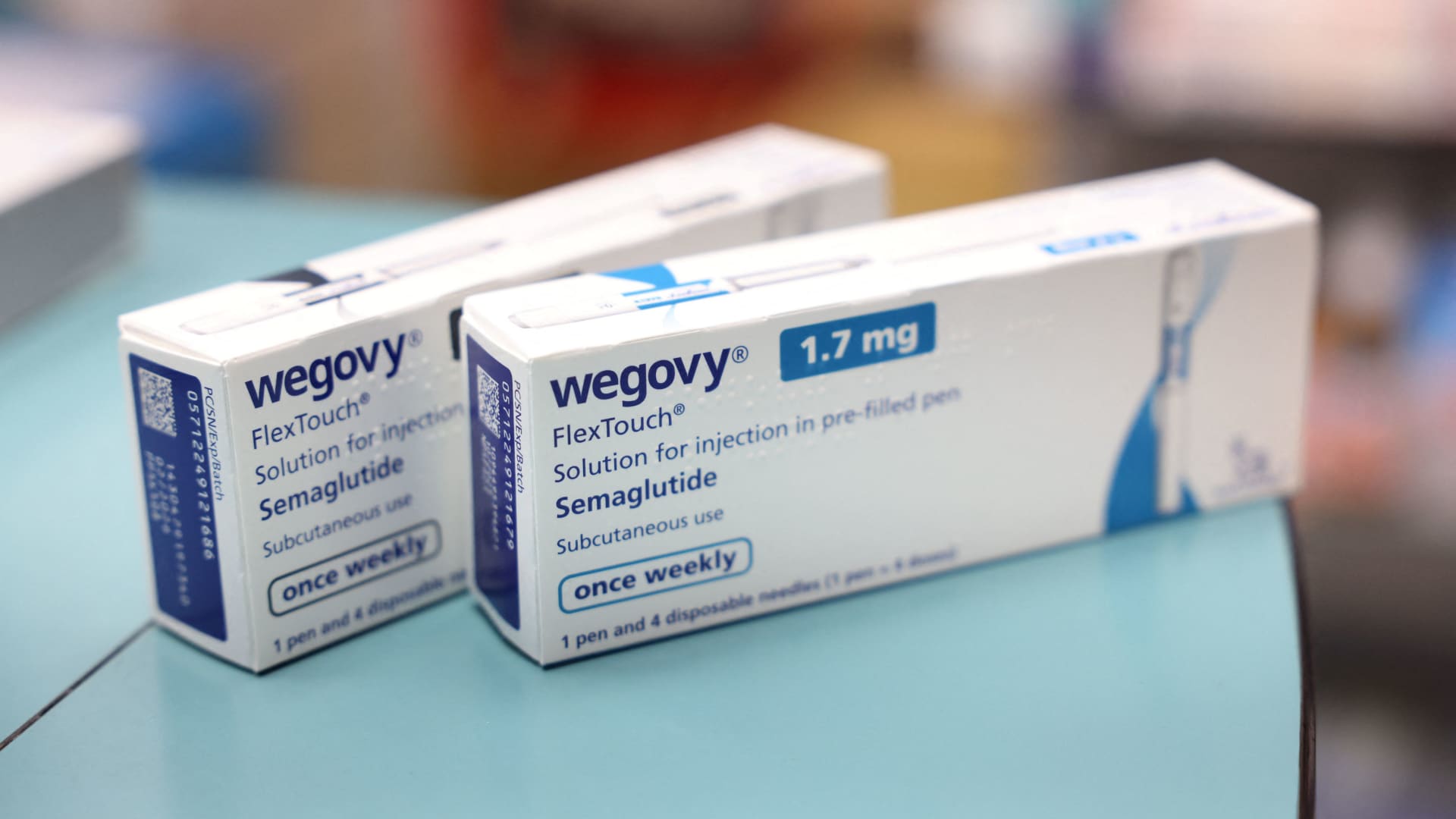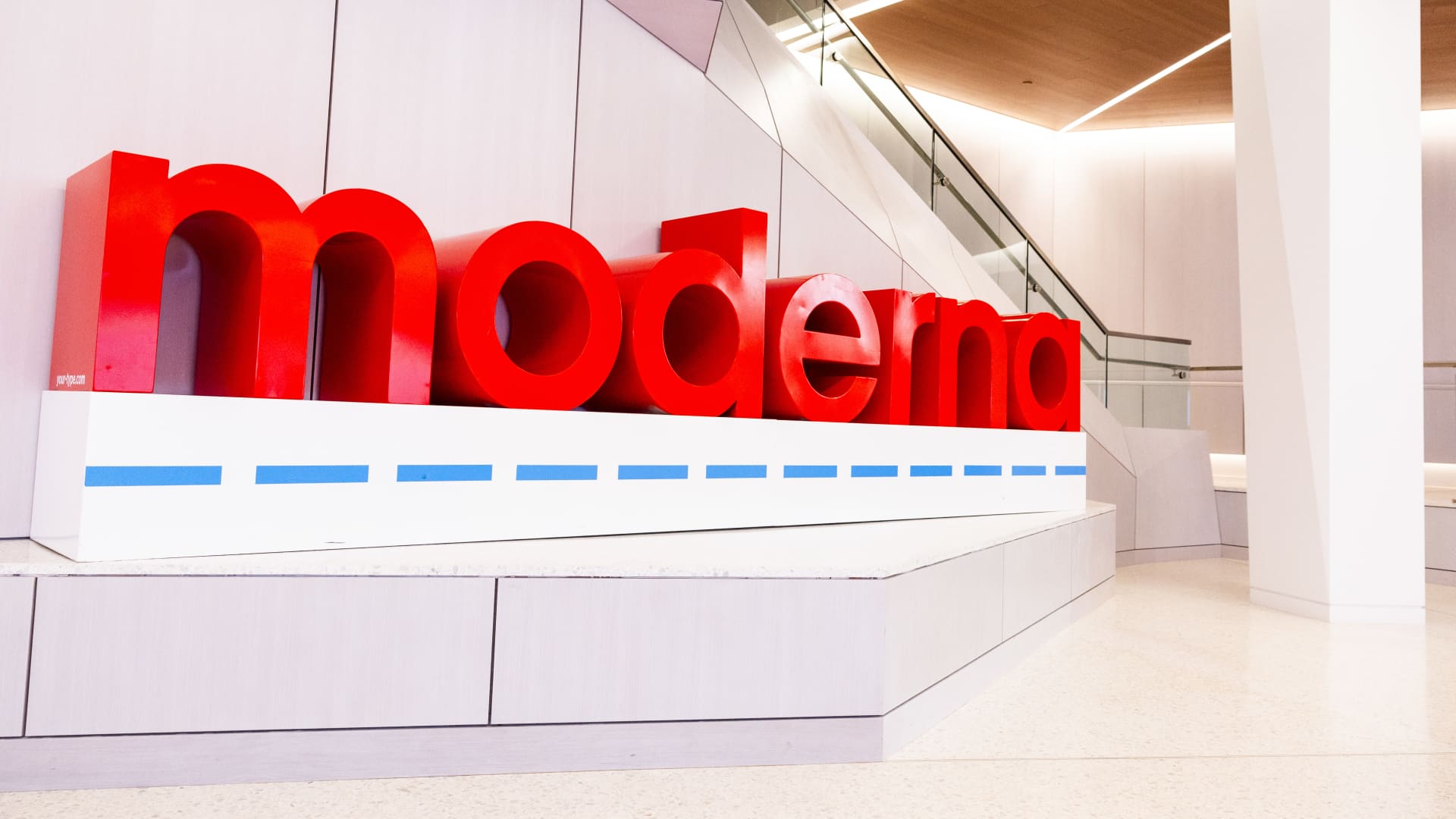GE Healthcare reported a mixed quarter before Wednesday's opening bell. While revenue declined slightly, an improvement in earnings along with a host of other positives drove the stock higher. Revenue rose just under 1% year over year to $4.86 billion in the third quarter, just shy of the $4.87 billion expected, according to analyst estimates compiled by LSEG. Organic revenue growth of 1% met expectations. Adjusted earnings per share in the third quarter increased 15% to $1.14, beating the LSEG consensus estimate of $1.05, thanks to continued cost optimizations, particularly at the gross margin level. Management raised the midpoint of full-year earnings guidance despite continued weakness in China that has been hampering organic revenue growth. GEHC YTD mountain GE Healthcare YTD We also like how 2025 is shaping up for GEHC, with stimulus in China still making its way to the market, a recently approved drug used in radiology, Flyrcado, being commercially available, and signs of earnings market share are based on a reading of a competitor. We are raising our price target to $95 per share from $92, but maintaining our 2 rating on the stock. Conclusion The results were mixed, but it is not surprising that the quarter was negatively affected by weakness in China. Excluding business in the world's second-largest economy, reported sales outside China rose about 5%, with organic orders outside China growing 4% compared to the previous year. In the US, CEO Peter Arduini commented on the call that “strong orders and sales were driven by multi-year enterprise agreements, comprised primarily of imaging products, particularly PET and CT systems, which are critical for the diagnosis and treatment of chronic diseases. We are pleased with the progress we are making in securing long-term partnerships, which is critical to our growth strategy. Another revenue driver in the quarter was PDx. [Pharmaceutical Diagnostics segment]. The team continues to deliver on customer requirements and we have seen PDx report seven quarters of single-digit or double-digit organic revenue growth.” In China, Arduini added: “We continue to monitor the market, which has been slow to grow. recover. Stimulus funding is taking longer to coordinate, so customers continue to delay normal purchases. This is impacting the overall growth of the Chinese market in the short term. The bottom line is that we continue to see this as a temporary challenge and, in the medium and long term, we see China as an attractive market.” Despite the headwind from China, management is accepting orders faster than they can deliver them, resulting in a Book-to-Billing Ratio of 1.04 times for the quarter (remember, any ratio above 1 is a positive sign of future growth. As a result, the team exited the quarter with a backlog of $19.6 billion, which is an increase of $1.2 billion year over year) and an increase of $600 million sequentially GE Healthcare Why we own it: GE Healthcare is the global leader. in medical imaging, diagnostics and digital solutions in healthcare. Its separation from General Electric in 2023 allowed the independent company to invest more aggressively in R&D, which will lead to new product innovations, especially in intelligence. artificial. The combination of new, higher-priced products along with streamlining its business post-spin creates an underrated margin expansion story. The launch of new therapies for Alzheimer's disease is another long-term tailwind. Competitors: Philips and Siemens Most recent purchase: May 29, 2024 Started: May 17, 2023 We also expect to hear more from management at the company's investor day event on November 21. Among the topics in focus will be management issues. comments on Flyrcado, which is an injectable PET radiotracer for better diagnosis of coronary artery disease that was recently approved by the US Food and Drug Administration. Management called it a game changer. On the call, Arduini said: “We estimate that there are about 6 million myocardial perfusion imaging procedures per year in the US, of which we believe PET MPI [myocardial perfusion imaging] represents around 5% to 10%. Revenue will increase over time and we are working with healthcare providers to build the capacity necessary to enable greater access to PET for cardiology. “We see an opportunity to realize revenues of more than $500 million annually from this patented molecule once the healthcare system infrastructure is in place.” Comment In GE Healthcare's imaging segment, home to products such as machines MRI and CT scans, quarterly revenue declined approximately 1% organically compared to the prior-year period, as ongoing weakness in China was only partially offset by growth in the U.S. That said, pricing “We continue to see strong demand, particularly in the US, with opportunities in replacements, upgrades and services. “CFO James Saccaro said on the post-earnings conference call. Revenue from the Advanced Display Solutions segment, formerly Ultrasound, in the third quarter was virtually unchanged for the year. -Throughout the year, as the increase in sales volume in the US was fully offset by weakness in China. The segment's earnings before interest and tax (EBIT) margin contracted 190 basis points due to an unfavorable sales mix. The Patient Care Solutions (PCS) segment, which covers a range of medical devices such as electrocardiogram machines and consumables used to take blood pressure readings, among others, recorded an organic sales increase of 2% as the Management was able to increase the factory's production capacity and production rates while also working through the segment's backlog. Efficiency gains enabled a 10 basis point improvement in the segment's EBIT margin. Saccaro said on the call: “The team has reduced the backlog of overdue orders throughout the year, driven by lean principles to increase capacity. These actions will allow for greater fulfillment flexibility in future quarters.” The Pharmaceutical Diagnostics (PDx) segment, used in radiology and nuclear medicine to deliver more accurate diagnoses, was particularly strong, generating organic segment revenue growth of 7%. PDx's EBIT margin improved 270 basis points driven by an increase in procedure volumes, price increases and new product introductions. This is the unit that Flyrcado will be hosted on. Guidance GEHC believes full-year organic revenue growth will trend toward the lower end of the previously provided range of 1% to 2%, with management citing “continued weakness in the Chinese market” as the primary cause. The Street expected an advance of 1.5% compared to the previous year. On the other hand, the team raised the lower end of its target range for full-year adjusted earnings before interest, taxes, depreciation and amortization (EBITDA), now aiming for between 15.8% and 16% against a range of 15.7% to 16% previously. , which compares to a consensus estimate of 15.8%. Full-year adjusted EPS is now expected to be between $4.25 and $4.35, up at the low end of the previous range of $4.20 to $4.35 per share. That compares with a consensus estimate of $4.25. Free cash flow reiterated at approximately $1.8 billion. (Jim Cramer's Charitable Trust is long GEHC. See here for a full list of stocks.) As a subscriber to the CNBC Investing Club with Jim Cramer, you will receive a trade alert before Jim makes a trade. Jim waits 45 minutes after sending a trade alert before buying or selling a stock in his charitable fund's portfolio. If Jim has talked about a stock on CNBC TV, he waits 72 hours after issuing the trade alert before executing the trade. THE ABOVE INVESTMENT CLUB INFORMATION IS SUBJECT TO OUR TERMS AND CONDITIONS AND PRIVACY POLICY, TOGETHER WITH OUR DISCLAIMER. NO FIDUCIARY OBLIGATION OR DUTY EXISTS OR IS CREATED BY VIRTUE OF THE RECEIPT OF ANY INFORMATION PROVIDED IN RELATION TO THE INVESTMENT CLUB. NO SPECIFIC RESULTS OR BENEFITS ARE GUARANTEED.
In the emergency room of the university hospital (UKJ) in Jena, Germany, an examination with a CT scanner is being prepared. GE Healthcare's scanner is called Revolution CT.
Martin Schutt | image alliance | fake images
GE healthcare reported a mixed quarter before Wednesday's opening bell. While revenue declined slightly, an improvement in earnings along with a host of other positives drove the stock higher.












